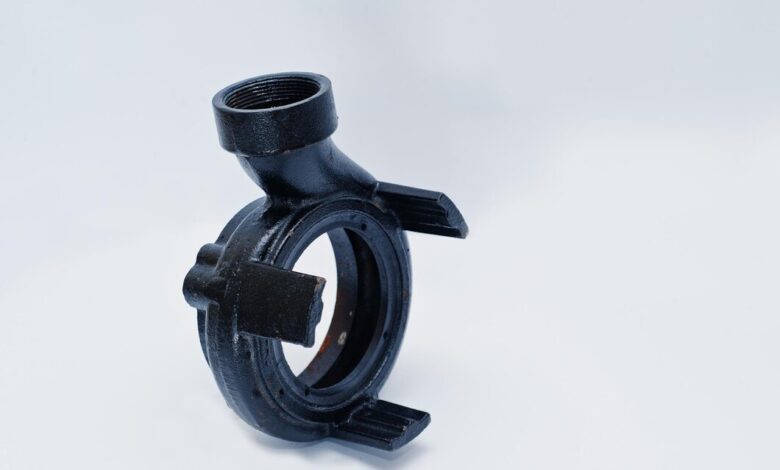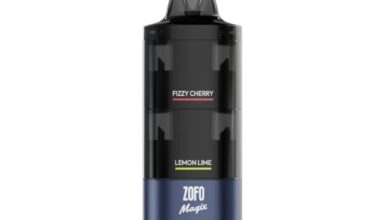How a Valve Springer Retainer Affects Engine Performance & Reliability

Many engine components work together to create reliable power, but few play such a critical role as the valve springer retainer. This small but mighty part helps maintain proper valve control and prevents catastrophic engine failure. Modern engines operate under intense conditions, with valve components cycling millions of times during normal operation.
Each cycle puts stress on the retainer, making their durability central to engine reliability. Understanding how these components work helps owners make better maintenance decisions and prevent expensive repairs. The relationship between valve control and engine longevity makes these components worthy of careful attention.
While often overlooked during routine maintenance, valve train components represent some of the hardest-working parts in any engine. Their proper function affects everything from idle quality to maximum power output.
Understanding the Role of Retainers
A valve spring retainer connects the valve spring to the valve stem, creating a secure mechanical connection that must remain stable under all operating conditions. This connection must withstand incredible forces while maintaining precise control over valve movement, often experiencing loads that exceed several hundred pounds of force during normal operation.
The quality and condition of these components directly affect engine reliability, as even minor wear can lead to decreased performance or complete failure. Modern engines place even greater demands on these parts through higher operating speeds and temperatures. With some engines capable of spinning beyond 6,000 RPM, the valve train components must handle thousands of cycles per minute while maintaining perfect precision.
The metallurgy and manufacturing precision of the spring retainer valve assembly becomes particularly critical under these demanding conditions. Heat management also plays a crucial role, as exhaust valve retainers must handle temperatures that can affect metal strength and durability.
Basic Function and Design
The spring retainer valve assembly works continuously during engine operation. Each time the valve opens and closes, the retainer must transfer force from the spring to the valve without failing. This repeated stress makes material quality and proper installation particularly important. The design must balance strength against weight while maintaining perfect reliability.
Common Issues and Prevention
Valve retainers face several challenges during operation. Heat, stress, and wear all contribute to potential problems. Understanding these issues helps prevent unexpected failures. Prevention starts with proper component selection and continues through careful maintenance practices.
Identifying Problem Signs
- Early Warning Signals
- Unusual valve train noise becomes more noticeable
- Inconsistent engine performance under load
- Rough idle characteristics develop gradually
- Misfire conditions especially at higher RPM
- Loss of power during acceleration
- Starting problems when engine is hot
- Ticking sounds that change with engine speed
- Metallic noises during cold starts
- Visual Inspection Points
- Surface wear patterns on contact areas
- Material degradation from heat exposure
- Proper spring fitment and alignment
- Keeper engagement depth and wear
- Coating condition on treated parts
- Installation alignment accuracy
- Spring pressure marks
- Contact point wear
Material Considerations
The valve springer retainer must handle significant stress while remaining lightweight. Different materials offer various benefits, from standard steel to exotic alloys. Choosing the right material depends on engine application and operating conditions. Higher performance applications often require premium materials for reliability.
Performance Applications
High-performance engines place extra demands on retainers. Higher spring pressures and increased RPMs create more stress on these components. Upgraded materials help handle these increased loads safely. The choice of materials affects both performance and longevity.
Installation Requirements
Proper installation of a valve spring retainer ensures reliable operation. Small mistakes during assembly can lead to major problems later. Taking time during installation prevents many common issues. Professional mechanics emphasize the importance of careful assembly procedures.
Tool Selection
Using the right tools makes installation easier and more accurate. Proper spring compressors and assembly lubricants help prevent damage during the installation process. Quality tools prevent damage to components during assembly.
Maintenance Schedules
Regular inspection of valve train components prevents many problems. Checking retainer condition during routine valve adjustments helps catch wear before failure occurs. Preventive maintenance saves both time and money compared to repairs after failure.
Performance Impact
The valve springer retainer affects both reliability and performance. Lighter retainers allow faster valve movement, while stronger materials handle increased spring pressure better. Finding the right balance improves both performance and reliability.
Power Production
Engine power depends partly on valve control at high RPM. Quality retainers help maintain proper valve motion throughout the RPM range. Better valve control allows engines to produce more power reliably.
Racing Applications
Competition engines place extreme demands on valve train components. Spring retainer valve assemblies must handle higher speeds and temperatures while maintaining reliability. Racing experience often leads to improvements in street components.
Daily Driver Needs
Street-driven engines need reliable components that handle regular use. Standard valve retainers work well for most applications when properly maintained. Regular inspection prevents most common problems.
Temperature Effects
Heat significantly affects retainer performance. Different materials handle heat differently, making material selection important for specific applications. Proper cooling system maintenance helps protect all engine components.
Cost Analysis
Quality valve spring retainer components sometimes cost more initially but often save money through improved reliability. Preventing failures costs less than repairing damage. Long-term ownership costs favor quality components.
Installation Tips
Taking time during installation prevents many common problems. Proper cleaning, careful assembly, and correct torque settings ensure reliable operation. Following professional assembly procedures prevents installation-related failures.
Modern Developments
New manufacturing techniques continue improving retainer design and reliability. Better materials and production methods create stronger, lighter components. These improvements benefit both street and racing applications.
Environmental Impact
Operating conditions affect retainer life significantly. Understanding these effects helps predict maintenance needs more accurately. Local conditions should influence maintenance schedules.
Future Trends
Continuing development brings improvements in materials and design. These advances help create more reliable and capable engines. New manufacturing methods promise better components at lower costs.
Conclusion
Understanding how a valve springer retainer affects engine operation helps owners make better maintenance decisions. Whether maintaining a street car or building a race engine, proper attention to these components prevents problems and ensures reliable performance. Regular inspection, quality parts, and proper installation create the foundation for trouble-free operation. The small investment in quality components pays dividends through improved reliability and performance.



